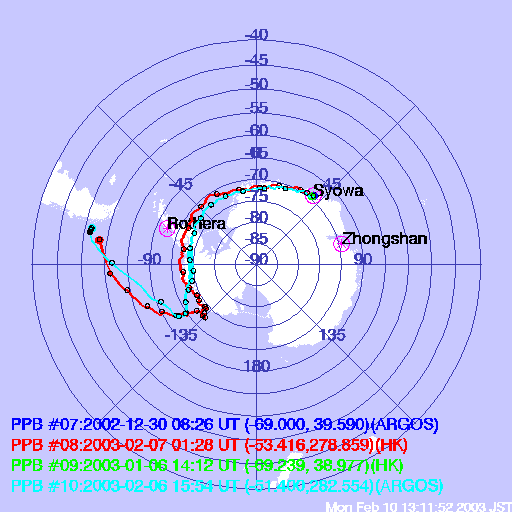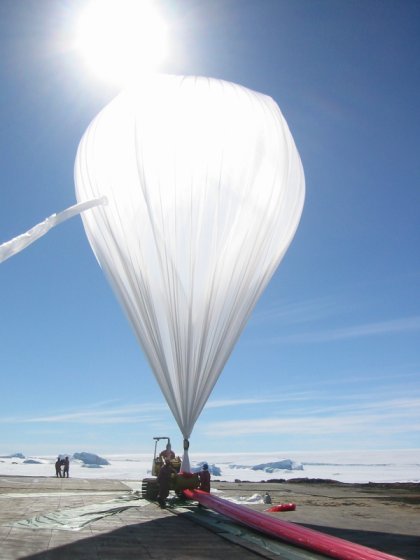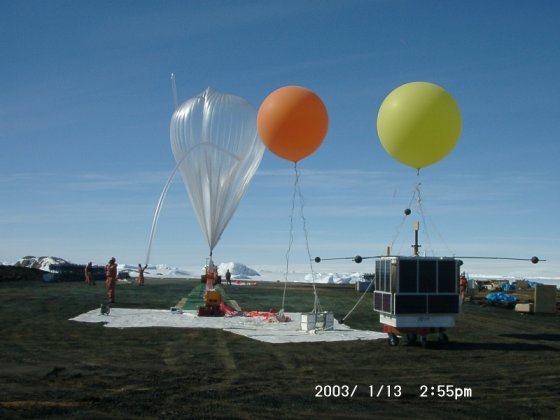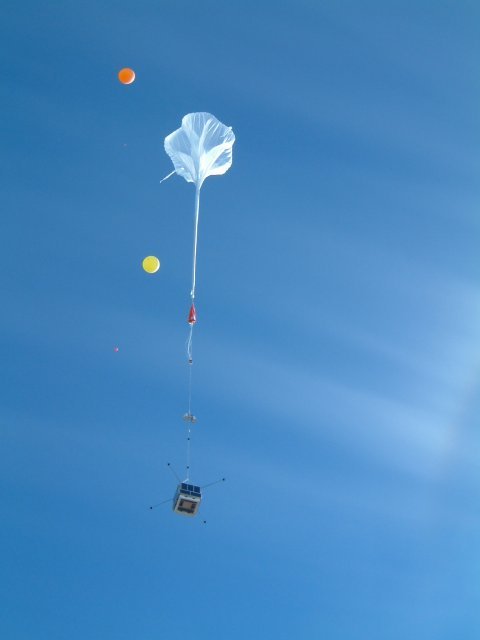Purpose of the flight and payload description
An ULF~LF wave receiver, aurora X-ray imager, DC electric field instrument, 3-axis fluxgate magnetometer, and the ionospheric total electron content measurement using GPS.
Details of the balloon flight

Balloon launched on: 1/13/2003 at 6:48
Launch site: Syowa Station, Antarctica
Balloon launched by: Institute of Space and Astronautical Science (ISAS)
Balloon manufacturer/size/composition: Polar Patrol Balloon
Flight identification number: PPB Nº 8
End of flight (L for landing time, W for last contact, otherwise termination time): 2/7/2003
Balloon flight duration (F: time at float only, otherwise total flight time in d:days / h:hours or m:minutes - ): 25 d
Landing site: In the sea 500 km off the Chilean coast.
Campaign: Polar Patrol Baloon 2002-2003
Overall weight: ~ 500 kg
Originally the balloon would make a full circumnavegation of the antarctic plateau but changes in the wind directions take the balloon path over the Pacific Ocean. The flight path of this balloon is marked in the map above in red colour.
3 identical balloons will be launched successively with longitudinal separation of about 300 km. Trajectory of these balloons will be crossing various boundary regions in the magnetosphere such as plasma pause, LLBL, PSBL and the cusp. The formation flight will be able to separate spatial and temporal variations of the phenomena occurring in these regions. Second flight
External references
- Polar Patrol Balloon (PPB) experiment in Antarctica National Institute of Polar Research
1939If you consider this website interesting or useful, you can help me to keep it up and running with a small donation to cover the operational costs. Just the equivalent of the price of a cup of coffee helps a lot.




